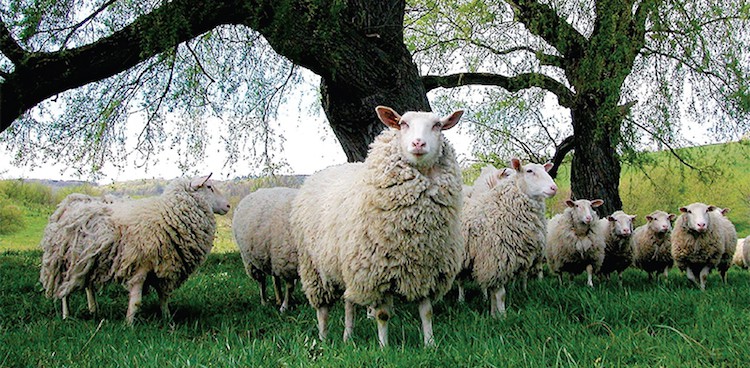
Origin
Although Friesian sheep are found the world over, the breed originally hails from the coastal region of Friesland (Ostfriesland) in the Netherlands and northwest Germany. With the area’s pastoral mix of moorland, sandy heath, and lush meadows, the Friesland countryside is ideally suited for grazing, rather than for growing crops.
History
Sheep have been used for milking since the dawn of agriculture—possibly even before cows—and cheeses made from sheep’s milk are products born of the most ancient methods used for preserving dairy. Despite this long historical presence, the popularity of using sheep for dairying declined significantly when the bubonic plague swept through Europe in the mid-14th century, leaving too few farmhands to milk the relatively low-producing herds of ewes. Cows, with their higher milking capacity, quickly surpassed sheep as the dairy livestock of choice.
However, when Friesians were imported to Britain in the 1960s to improve the yields of commercial meat breeds, a small group of enterprising farmers turned to the age-old practice of milking sheep, with excellent results. Friesians have a relatively calm disposition and produce more lambs and more milk than other breeds. By the early 1990s, the sheep-dairying industry in both the United Kingdom and America was experiencing a full-fledged revival and the market for sheep’s milk cheeses began to grow.
Appearance
Friesian sheep are polled (hornless) in both sexes, though they can have scurs—underdeveloped horns that are generally loose and movable beneath the skin and unattached to the skull. Friesians have snowy white wool, though German Friesians can be black or gray. The breed has an elegant head with a long Roman nose; its ears, legs, underbelly, and udder are all clear of dense wool. Because of the breed’s distinctive, short “rattail,” the animals don’t require docking (partial amputation of the tail—a common, though controversial, practice in cow dairying that is thought to improve cleanliness and ease of milking the animals). Friesians are a relatively large breed, with mature ewes weighing in at 160 to 180 pounds—rams have been known to tip the scales past 200 pounds.
Milk & Cheeses
Sheep’s milk is pure white in color with a creamy, slightly nutty flavor. It is also significantly higher in total solids (18 percent) and protein (5.6 percent) than either cow’s or goat’s milk, and it is exceptionally rich—milk from Friesian sheep averages six to seven percent fat. Thanks to these high percentages, it generally takes only about five pounds of sheep’s milk (with some seasonal variations) to make one pound of cheese—compared to the ten pounds of cow’s milk necessary to make the same amount.
Many of the world’s most famous cheeses—including France’s Roquefort, Italy’s Pecorino, and Spanish Manchego—are classic sheep’s milk cheeses. Another unique quality of sheep’s milk is its smaller fat gobules, which naturally renders the milk more homogenized since the cream isn’t as quick to rise to the top. With its delicious, fresh taste and ultra-creamy texture, sheep’s milk is also an ideal base for yogurts and ice creams.




